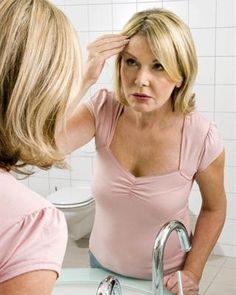According to the “British Journal of Dermatology”, about 39% of post-menopausal women experience an increased level of hair growth on facial areas including: upper lip, cheeks, ear, and most of all, on the chin. These hairs could be “peach fuzz” or thick, dark hairs that sprout randomly. Some women experience new growth of all types of hairs, or just changes in thickness. The truth is that most of these hairs have already been on the face, but just become more noticeable because of hormonal changes. Although many people believe that hair changes are related to estrogen, it is actually several hormones at work that are prompting these changes, as well as the relationship between them. A decrease in progesterone, androgen and estrogen during menopause seemingly causes hair loss. A simultaneous increase in testosterone can lead to excess hair in unwanted areas.
A variety of physical changes come along with menopause. Hair is one of the body’s key elements that is affected during this time. Though everyone has a different experience, the general pattern is hair thinning and loss on the scalp and eyebrows, as well as a surge in facial hair growth.
There are several non-hormonal factors that affect hair fluctuations, such as: stress level, genetic predisposition, diet and nutritional deficiencies, medicines, activity level, and medical conditions.
Read complete post here - Menopause Hair Changes
For more information on topics like permanent hair removal for blonde hair, does home electrolysis hair removal work, click on the links.
Visit TopElectrolysisNYC for details.

Comments
Post a Comment